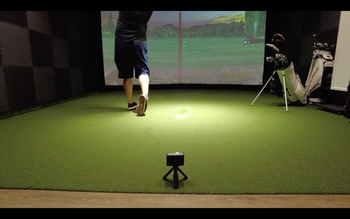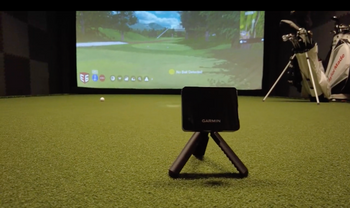Your putter length has a massive impact on how well you roll the rock. When you're standing 5'2" to 5'4", a 33-inch flat stick is your sweet spot. Got a couple more inches at 5'6" to 5'8"? You'll want to bump up to a 34-inch model. The big guys over 6'2" usually need something north of 36 inches. But wait, there's more to this puzzle than just how tall you stand. Your wingspan and natural setup position matter just as much.
Table of Contents
Breaking Down the Putter Length Range
You might think every putter on the rack is basically the same size, but that's where you'd be wrong! Sure, most pro shops stock putters between 34 and 35 inches, but the real story goes way beyond that limited selection.
The typical range runs from 33 to 35 inches, and lots of manufacturers just slap a 35-inch shaft on everything and call it good. But check this out, putters actually come anywhere from 32 inches up to a whopping 52 inches! That's a crazy 20-inch spread. Shorter sticks work great for smaller players, and those super-long models? They're perfect for tall folks or anyone rocking a belly putter style.
Why does this matter so much? Because the right length puts your peepers directly over the ball when you address it. Get this wrong and your consistency goes out the window. Plus, your putting style, whether you stand tall or hunch over like you're reading tiny print, makes a huge difference in what length fits you best.

Matching Your Height to the Right Putter
Time to get specific about what length fits your frame! At 5'0" to 5'2", you're looking at a 32.5-inch putter. Between 5'2" and 5'4"? The classic 33-inch model is your friend. If you're 5'4" to 5'6", go with 33.5 inches. The 5'6" to 5'8" crowd does best with 34 inches. Golfers standing 5'8" to 6'0" should check out 34.5-inch putters. When you break 6'2", you'll probably need more than 36 inches, and our shorter friends under 5'2" might want something less than 32.5 inches for the best results. But don't just go by height—your arm length and putting posture matter significantly too.
Finding Your Magic Number
Just guessing at putter length is like trying to sink a 20-footer with your eyes closed, not gonna work! Grab yourself a tape measure and find a nice flat spot. Initially, stand your putter with the sole flat on the ground, then run that tape from the middle of the face straight up to the grip's end. Stay tight to the shaft for an accurate read.
But wait, there's more to this puzzle. Your build, how long your arms hang, and your go-to stance all play into the equation. Want to get really dialed in? Take your normal putting position and measure from your hands to the deck. Feeling nerdy? Bust out the Pythagorean theorem, measure your arm length and ball position, then solve A² + B² = C² where C is your perfect putter length. The right length keeps your putter sole flat at address with the proper lie angle. Just remember, if it feels good to you, that's what really counts.
How the Right Length Alters Your Putting
Find that perfect length and watch your putting completely change. When your putter fits like it should, your eyes line up right over the ball without any effort. That means your aim gets way better, fast.
Your stroke smooths out because you're not reaching or scrunching up anymore. Better balance means better distance control, and that's the secret sauce for reading breaks correctly. Makes sense, right? When you're comfortable, you're not fighting your gear.
Check out these stats, players using fitted putters miss way fewer putts than those stuck with generic 35-inchers that don't match their build. Wrong length equals wrong lie angle, which sends your putter face pointing who-knows-where at impact. But here's the real kicker, you'll feel way more confident standing over every putt!

What Really Determines Your Perfect Length
Sure, measurements give you a starting point, but finding your ideal putter length involves more moving parts than you'd think.
How you set up makes a huge difference. Like to stand nice and tall? You'll probably want a longer putter to stay balanced. Prefer to get down low? A shorter stick usually gives you better feel and control.
Don't forget about those arms! Two players at 6'0" might need totally different lengths if one has gorilla arms and the other has T-rex proportions.
And here's something nobody talks about enough, what feels right to you matters most. Some players just groove better with certain lengths, no matter what the measuring tape says. Got a bad back or wonky knees? Those physical issues might mean you need to adjust from the "ideal" length.
Getting Fitted vs. DIY Measuring
Time for the big choice: drop some cash on a professional fitting or handle it yourself? Pro fitters come loaded with fancy tech that checks lie angles, measures swing weight, and tracks your stroke path down to the millimeter. They'll study how you set up and dial in everything to match your unique style. Tour pros love this stuff!
Going the DIY route? You'll save some green using basic tools like a ruler and level. The downside? You better know your stuff about fitting basics, and expect some trial and error along the way. Professional fitting gives you laser precision and expert eyes, while doing it yourself lets you stay in control and keep your wallet happy.
Tweaking Length for Your Stroke Type
How you stroke it makes a big difference in what length works best. Got that straight-back, straight-through stroke? Center-shafted putters keep the face balanced throughout your motion. These babies naturally stay square, making it way easier to start putts on line.
Arc putters need something different. Slant neck designs create toe hang that matches your curved path. Your putter face will fan open and closed a bit, which actually helps you stay on target with an arcing stroke. Some players dig the stability of belly putters or broomsticks to keep those wrists quiet.

Rookie Mistakes in Putter Selection
Picking the right length sounds simple, but players mess this up all the time. The biggest goof? Measuring while you're all slouched over or standing like a robot. Your natural arm position is way more important than you realize!
Here's another trap, thinking height automatically equals putter length. Nope! Your setup and posture matter just as much. Lots of folks forget about eye position too. Can't see your line properly? Good luck making putts, no matter how smooth your stroke is. And please, pick what feels good, not what looks cool in your buddy's bag.
Why Getting It Right Pays Off Forever
Switch to a properly fitted putter and watch the magic happen over time. You'll start draining more putts right away, which means fewer strokes every round. Most players drop 2-3 putts per 18 holes in just the first few weeks!
Your distance control gets dialed because you're not fighting bad equipment anymore. Part ways with those embarrassing three-jacks and hello to confident lag putting. Here's the cool part, when your putter feels right, you'll actually want to practice more. More practice equals better scores, which makes you practice even more. It's like compound interest for your golf game!
Your Questions Answered
Indoor vs. Outdoor—Same Putter Length?
Yes, rock the same length everywhere! Whether you're rolling balls on your basement carpet or the country club greens, your 34-inch wand works just fine. Location doesn't matter—keeping your setup and stroke consistent does. Your body mechanics stay the same whether you're inside or out.
When Should You Check Your Length Again?
Give it a look every 3-4 years or whenever your body changes noticeably. Getting older means your flexibility and posture shift, which can mess with your putting touch. Feeling stiffer in the back or standing taller lately? Time for a checkup! Watch your stats too—erratic distance control usually means something's off.
Does Putter Head Weight Change Your Ideal Length?
Nope, weight doesn't change what length matches your height. Your ideal length comes from your setup, posture, and arm hang—not how heavy the head is. Weight does affect stroke feel though. A heavier head might tweak your grip or tempo, making certain lengths feel better. Get the length right first, then dial in the weight.
Do Weather Changes Affect Putter Length?
Weather won't change your ideal putter length one bit. Your height stays the same whether it's sunny or storming! Weather does change how greens roll though. Wet conditions slow things down, so you'll need to hit it harder. Dry days mean faster greens and softer strokes. Wind barely matters since you're making such short swings.
Different Rules for Lefties?
Nah, lefties use the exact same guidelines as righties. Being left-handed doesn't change how your height, setup, and putter length work together. A 5'6" lefty needs that same 33-inch putter as a 5'6" righty. Same goes for 6-footers wanting 34 inches. Focus on your measurements, not which way you swing.
The Bottom Line
Finding your ideal putter length doesn't require a PhD, but it'll seriously level up your putting! No matter if you're pushing 5'2" or stretching past 6'5", there's a putter out there with your name on it. Stop struggling with that garage sale special that's all wrong for your build. Invest the time to get measured right or see a fitter. Your scorecard will look better, and you might actually start enjoying those knee-knockers.





